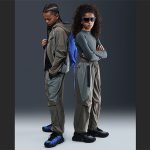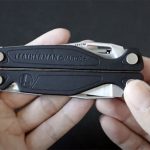Nike Inc. reported a modest gain in earnings in the fourth quarter ended May 31, slowed by World Cup marketing investments. But results topped Wall Street's estimates by 3 cents a share. More impressively, revenues grew 10.9 percent to $7.43 billion and 13 percent on a currency-neutral basis, thanks to strong sales in North America and Western Europe.
And sales momentum continues to be strong. Nike Brand futures orders advanced 12 percent on a C-N basis, driven by an 8 percent increase in units and a 4 percent rise in average selling price. Growth was led by continued strength in North America and Europe despite its futures window moving beyond the World Cup. On a reported basis, futures grew 11 percent, reflecting weaker international currencies, particularly in Japan and developing markets such as Brazil, Argentina, Russia, and Turkey.
Excluding year-ago losses from discontinued operations, net income in the quarter inched up 1.2 percent to $698 million, or 78 cents a share, but came in ahead of Wall Street's consensus estimate of 75 cents. Net earnings rose 5.4 percent.
Gross margins improved to 45.6 percent from 43.9 percent a year ago but SG&A expenses increased to 33.0 percent from 30.3 percent, with the bump up largely due to spending around the World Cup. Nike officials estimated that changes in currency exchange rates, including the impact on gross margin, other expense, and P&L translation reduced its year-on-year EPS growth by 7 percentage points for the fourth quarter.
The strong fourth-quarter performance brought sales for the full year to $28 million, up 10 percent. With a 120-basis point improvement in gross margin helping to offset the loss of 8 points of growth to currency headwinds, EPS rose 11 percent to $2.97 for the full year.
“We introduced great products, launched new consumer experiences, expanded our digital ecosystem, and developed engaging retail concepts that drove excitement and energy for our brands in the marketplace,” said President and CEO Mark Parker on a conference call. “By staying true to the Nike spirit we continued to deliver great results like those we're reporting today.”
In the quarter, total Nike Brand revenues grew 13 percent on a C-N basis. Footwear and Apparel both grew 14 percent while Equipment slid 1 percent. On a reported basis, Nike Brand sales climbed 10.8 percent to $7.02 billion. Footwear gained 12.0 percent to $4.4 billion. Apparel gained 11.8 percent to $2.14 billion, and Equipment gave back 4.3 percent to $447 million. Nike Brand EBIT was down 3.8 percent to $1.12 billion.
In North America, sales for Nike Brand in the quarter rose 10.1 percent to $3.29 billion and gained 10 percent on a C-N basis. The gains were led by Footwear, advancing 12.0 percent to $2.04 billion. Apparel grew 8.9 percent to $2.04 billion and Equipment inched ahead 0.8 percent to $241 million. On a C-N basis, sales grew 11 percent in Footwear, 10 percent in Apparel and 6 percent in Equipment. EBIT advanced 14.0 percent to $887 million.
By category, the Q4 gains were led by double-digit growth in basketball and global football. In Q4, DTC revenue grew 21 percent, driven by an 8 percent increase in comp store sales and significantly higher Nike.com revenues.
In the year, revenues for the Nike Brand in the North America region increased 10.2 percent to $12.3 billion and grew 10.0 percent on a C-N basis. The gains marked the fourth consecutive year of double-digit revenue growth. For the year, EBIT for North America grew 16 percent as strong top-line growth and gross margin expansion were partially offset by higher DTC operating costs and demand creation. North America's futures were ahead 11.0 percent.
On a conference call with analysts, Trevor Edwards, president of the Nike Brand, noted that the geography had its most profitable year ever with reported EBIT expanding faster than reported revenue to reach $3 billion for the year.
“For the last decade we've heard that our opportunities in North America are tapped out, but as we continue to demonstrate, nothing could be further from the truth,” Edward added. He attributed the success to its “category offense’ strategy that not only led to building on its leadership position in basketball and running categories but also gains in e-commerce as well as in its apparel, womens and young athlete’s businesses.
In Western Europe, sales for the Nike Brand grew 18 percent on a C-N basis. Footwear was ahead 18 percent and Apparel rose 20 percent. Equipment was down 4 percent. EBIT was ahead 35.2 percent to $192 million.
For the year, sales grew 18.7 percent to $4.98 billion on a reported basis and 14 percent on a C-N basis. EBIT increased 33 percent, driven by revenue growth, gross margin expansion, and SG&A leverage, as well as FX benefits from the stronger euro. Futures jumped 25 percent on a reported basis and 22 percent on a C-N basis.
Edwards said growth in Western Europe was seen across all key categories and nearly every territory. He said the region continues to benefit from decisions made over two years ago to align its biggest growth opportunities through its ‘category offense’ initiative. These include installing shop-in-shops at JD Sports, Foot Locker, and Intersport, as well as investments in its own retail stores and online.
“And we've only just gotten started,” added Edwards. “There are tremendous opportunities for continued growth ahead. By being focused and decisive we now lead the market as the region's most coveted sports brand. Nike is the number-one brand in each of the top 10 cities in Western Europe, and we're the footwear market share leader in every key country, and we're not done yet.”
In Central and Eastern Europe, currency-neutral revenues for Nike Brand increased 12 percent in Q4. Footwear was ahead 12 percent and Apparel jumped 25 percent but Equipment revenues were down 7 percent. On a reported basis, overall sales were up 6.6 percent to $$70 million. EBIT was down 10.1 percent to $71 million as stiff FX headwinds and SG&A investments more than offset higher revenues.
For the year, revenues grew 12.9 percent in Central and Eastern Europe to $1.39 billion and gained 15 percent on a C-N basis. Growth was seen in every key category except action sports, and every territory, except Israel. Football, running, and women's training were the fastest growing categories, with each reporting growth of 20 percent or greater gains for the quarter and the year. Russia, Turkey, Poland, and Greece each reported double-digit growth for the year. EBIT in the year grew 19 percent. Futures were ahead 10 percent on a reported basis and 14 percent on a C-N basis.
In Greater China, sales for the Nike Brand were ahead 2 percent on a C-N basis led by strong DTC growth. Footwear was ahead 6 percent and Equipment climbed 13.2 percent while Apparel slid 2 percent on a C-N basis. Reported revenues overall grew 3.5 percent to $702 million. EBIT was down 11.5 percent to $215 million, largely reflecting the timing of marketing and operational investments.
Greater China’s revenues for the year advanced 5.0 percent to $2.6 billion and gained 3.0 percent on a C-N basis. EBIT was flat in the year, as revenue growth and gross margin expansion were offset by higher SG&A, reflecting investments in DTC and its new headquarters in Shanghai.
Edwards said Nike has made “great progress” in resetting the China marketplace and “we're on track to achieve our goal of returning this market to sustainable, double-digit revenue growth.” New merchandising concepts at its DTC doors drove Q4 comps ahead 22 percent with continued increases in profitability. Tighter merchandising assortments at its wholesales partners also helped results and hundreds of the Nike-only stores have been re-merchandised.
“As a result, comp store sales and profitability for their overall fleet are up, with the reprofiled stores significantly outperforming,” said Edwards. “And importantly, inventory levels in the marketplace are also down significantly. While we sill have work to do in China, we're making great progress and we remain confident that we have the right plan in place to achieve our true potential in this growth geography.”
Futures in Greater China were ahead 6 percent on both a reported and C-N basis. For FY15, China’s sales are expected to grow at a high-single digit rate. Growth will vary with changes on how Nike flow’s product seasonally into the market, with “somewhat faster” growth expected in the first quarter.
In the Japan region, C-N revenues for the Nike Brand were flat for the quarter. Footwear gained 12 percent on a C-N basis but that was offset by a decline of 11 percent in Apparel and a drop of 17 percent in Equipment. On a reported basis, sales were down 7.4 percent in the quarter, to $226 million, impacted by the weaker yen. Japan’s EBIT was off 13.2 percent in the quarter to $39 million.
For the year, Japan’s revenues were up 5 percent on a C-N basis, driven by growth in sportswear, football, and basketball. DTC revenues increased 18 percent for the year, reflecting comp store sales growth as well as the launch of Nike.com. Net sales were down 12.0 percent to $771 million. Full-year EBIT fell 6 percent on a reported basis. Japan’ futures were flat on a C-N basis and down 6 percent on a reported basis.
In the Emerging Markets region, sales for the Nike Brand jumped 25 percent on a C-N basis in the quarter, led by gains of 44 percent in Apparel, 19 percent in Footwear, and 8 percent in Equipment. Double-digit growth was seen in almost every territory, and revenues increased in nearly every key category. Reported revenues were up 8.7 percent to $1.08 billion, significantly affected by weaker currencies in a number of developing markets. EBIT was up 7.9 percent to $273 million as stronger revenue growth was only partially offset by FX and World Cup marketing investments.
For the full year, sales in the Emerging Markets region rose 13 percent on C-N basis and grew 3.1 percent on a reported basis to $3.95 billion. The gains came despite logistics issues in Mexico earlier in the year and generally weak macroeconomic conditions across Latin America. Every key category except men's training posted higher revenues for the year, paced by football, running, and sportswear. EBIT fell 3 percent in the year. Futures were up 2 percent on a reported basis and 9 percent on a C-N basis.
Said Edwards of the region, “We're continuing to closely monitor retailer inventory and the flow of product into Mexico and across Latin America to ensure the marketplace and our brand stay healthy.”
Highlighting a few categories, Edwards said global football sales grew 21 percent on a C-N basis in the year. Reported revenues in the category grew 17.6 percent to $2.3 billion. Edwards said the “enthusiasm we see in Brazil, coupled with our number-one footwear market share around the world, is living proof that our football business has never been stronger.”
On the marketing front, its Risk Everything campaign, with its two online videos Winner Stays and The Last Game, has generated over 370 million digital views. Another successful outreach program has been Phenomenal Houses, which combine product trials, athlete appearances and football tournaments. Over the last 10 weeks, Phenom Houses in Rio, London, and New York, and many other cities hosted more than 50,000 fans, and thousands more played in its Winner Stays football tournaments globally.
Edwards also raved that Nike had 10 teams in the tournament and more players wearing Nike boots in the World Cup than all other brands combined. More than a third have been wearing Magista or Mercurial Flyknit boots. He said the World Cup helped the global football category “drive great results in our stores, online, and at football shops with our wholesale partners around the world.”
Running grew 10 percent on C-N basis in the year and advanced 8.2 percent to $4.62 billion overall. The gains were driven by innovations like Free Flyknit footwear, Dri-FIT Touch, and Aeroloft apparel and efforts to reach new runners. In Q4, Nike engaged with over 85,000 runners through events, and millions more via the Nike+ platform. Said Edwards, “That energy directly translates at retail worldwide in our DTC locations and running destinations like Crosstown Running at JD Sports and the Nike Track Club at the Finish Line. The consistent achievement in the running category confirms the strength of our strategy and points to the massive potential we see for running going forward.”
Nike’s Women’s revenues grew 12 percent on a C-N basis (10.6 percent on a reported basis) to $4.97 billion, moving us closer to its goal of $7 billion by FY17. Edwards highlighted ”must-have” items such as the Legend Tights, the Nike Pro Bras, and the Sky Hi Dunks, but particularly credited the Nike Training Club app and efforts to bring that program to retail. Said Edwards, “The 50-plus stores where we've executed these concepts have been outpacing comp store growth for the rest of the fleet. Our success in FY14 only hints at the enormous opportunity we see in the women's business.”
Men’s grew 9 percent on a C-N basis in the year (7.1 percent on a reported basis) to $14.0 billion. Young Athletes’ sales were up 16 percent on a C-N basis (14.9 percent on a reported basis.) to $3.74 million.
In other categories for the full year, Basketball was ahead 19 percent on a C-N basis (18.6 percent on a reported basis) to $3.1 billion. Men’s Training revenues rose 5 percent on a C-N basis (3.7 percent on a reported basis) to $2.48 billion.
Women’s Training advanced 10 percent on a C-N basis (7.7 percent on reported basis) to $11.5 billion. Action Sports grew 9 percent on a C-N basis (8.1 percent on reported basis) to $738 million. Sportswear added 7 percent on a C-N basis (5.5 percent on reported basis) to $5.9 billion. Golf rose 8 percent on a C-N basis (7.1 percent on a reported basis) to $789 million.
Sales to Wholesale Customers for Nike Brand climbed 8 percent on C-N basis (6.6 percent reported) to $20.7 billion. DTC sales rose 22 percent (21.5 percent reported) to $5.3 billion. The gains were driven by 10 percent growth in comparable store sales, new store expansion and a 42 percent increase in e-commerce sales. As of May 31, 2014, the Nike Brand had 768 DTC
stores in operation as compared to 678 a year ago. On a wholesale basis, DTC sales rose 25 percent on a C-N basis (24.3 percent reported) to $3.1 billion.
Converse’s revenues were ahead 15.8 percent in the quarter on a reported basis to $410 million and ahead 16 percent on a C-N basis. EBIT was ahead 5.6 percent. Full-year revenues rose 16.2 percent to $1.6 billion and gained 15 percent on C-N basis The growth was largely organic, driven by midteens revenue growth in Converse's direct distribution markets, particularly the US, China, and the UK, as well as expansion of the direct-to-consumer business.
Companywide, the improvement in gross margins by 170 basis points in the quarter was better than expected, mainly due to the strong performance of its growing DTC business, a mix shift to higher-margin product, and higher margins on closeout sales. Margins gains for the quarter and year were primarily driven by higher average prices, reflecting product demand, as well as the continued strength of its DTC business. These upsides more than offset downward pressure from product cost inflation and FX headwinds.
SG&A expenses increased in the quarter to 33.0 percent from 30.3 percent, and overall increased 21 percent to $2.4 billion. Marketing expense jumped 36 percent to $876 million, driven by marketing support for the World Cup and key product initiatives. Operating overhead expense increased 13 percent to $1.6 billion due to higher costs for the expanding DTC business, as well as investments in infrastructure and digital innovation.
For the year, SG&A expenses rose 12.4 percent to $8.8 million with the margin increasing to 31.5 percent versus 30.8 percent year ago.
Companywide EBIT (earnings before interest & taxes) was up 2.4 percent in the quarter to $920 million.
Looking ahead, Nike generally kept its guidance for Fiscal 2015 first shared in its third quarter. Revenues are expected to grow at a high-single digit rate, reflecting low-double digit C-N growth, partially offset by continued FX pressure from developing market currencies. Q1 reported revenue to grow at a low-double digit rate, driven by “tremendous energy around the World Cup and continued growth in North America, Europe, China, and the emerging markets.”
Gross margin for Q1 and the full year is expected to expand by about 75 basis points due to higher average selling prices, driven by its ongoing focus on optimizing pricing and emphasize premium products. Growth in its DTC business should also benefit gross margin, helping to offset increases in product input costs, particularly labor.
Marketing expenses are projected to be up for the first quarter due to World Cup spending. Operating overhead for Q1 is expected to grow in the high teens, reflecting investments in innovation, consumer digital, DTC, and key operating capabilities. For the full year, total SG&A to grow at a similar rate as FY14.












